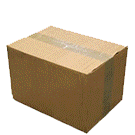Week 2Assignment: model (draw, render, animate, simulate, ...) a possible final project, and post it on your class page
Programs: Rhinoceros, Photoshop, 3DS Max
Lessons Learned: Play with different programs, mediums, layers, and blending in Photoshop and you can create wonderful scenes.
Providing a more "artful" approach to data gathering; the machine will provide a visualization of the environmental interactions over a given amount of time. As technology progresses we are removed further and further from the existing environmental conditions that we exist within. Ultimately through my project I hope to facilitate a better relationship between environment and space.

update 2.0
After exploring the possibility of creating a digital data drawing machine, I found the idea of manipulating a spatial form inside a gallery more rewarding. What is at play in the scenario is a data gathering apparatus and a resultant form mechanically orchestrated to shift and stir in response to ecological fluctuations. While the ideology that was working throughout the 1.0 version seemed successful, bridging the gap between environments in a more real-time digital interaction through mechanical intervention ultimately proves to be more valuable experiment.


update 3.0
Ultimately the final project that I wish to create has changed! While I enjoy the connective aspects of my previous direction, I want to explore a more 1:1 interaction present on site. I worked up a perspective direction in Rhino and then rendered the fabrication in 3DS Max to present my idea more clearly.

The installation focuses on the interaction between fabricated objects and naturally driven forces. An array of 4x4 two meter high objects will be situated in a given area, able to be activated by touch, by wind, or by other natural forces. The inhabitants of the space will mingle through, activating inflated globes through touch bringing to life light and user generated noise, equally the space will come to life from the environmental inputs. The fabrication of the object will involve a 3d printed case, an inflated globe articulated through a flexure joint, a speaker, and lastly a "Fab-duino". Each inflated globe will have RGD LEDs embedded within. The stock of the piece will be held by a spring that will have force sensors monitoring the degradation and angle in relation to the force vs static state, this process will generate a color and a noise. The installation can be activated by the environment so it does not need the interaction with users, but when people are inserted into the arena activation will be increased due to human’s inherent curiosity to interact.

Downloads
